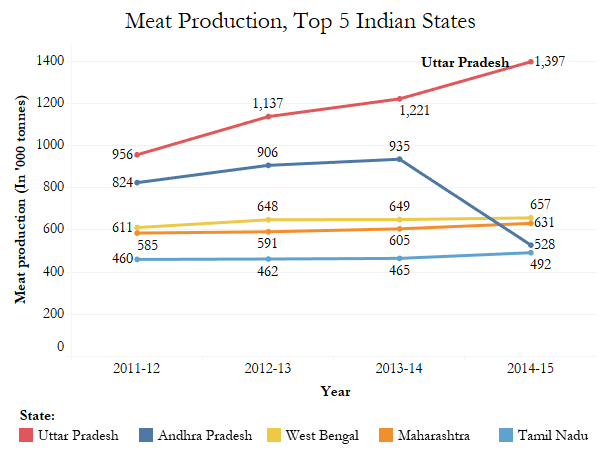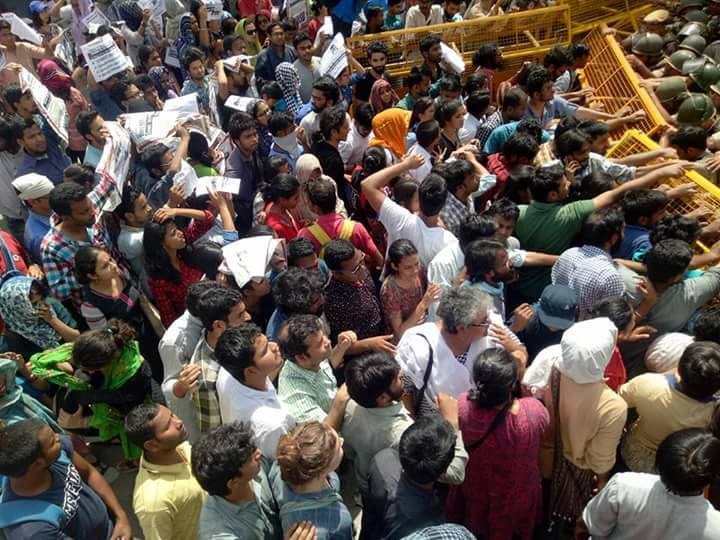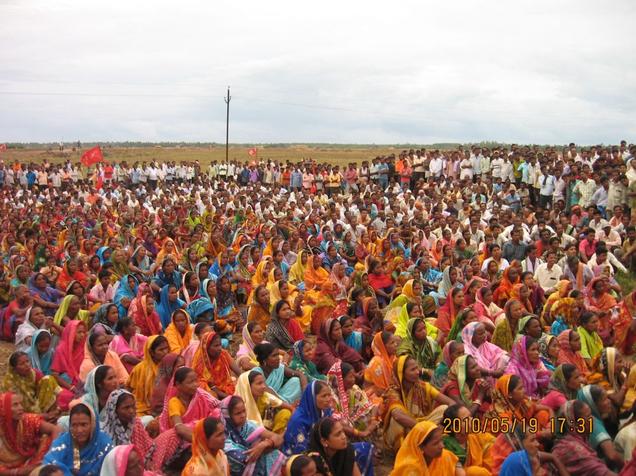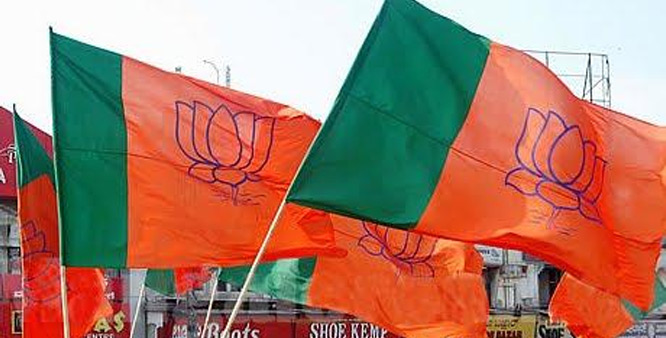We, the other Muslims of the world, would like to invite you to an open debate about our respective ideas of the Islamic ethics of war and peace.
We wish to understand how such drastically divergent understandings have evolved from two groups who ostensibly belong to the same religion, read the same scripture, and follow the same prophets.
With such diametrically opposed notions, it is clear that both of us cannot be right. It is time we began a conversation to understand each point of view, and decide who can more rightly claim to hold the authentic interpretation.
You have been invited to this discussion many times before. Consider this letter merely one among many that challenge you to show how you formulate your dis-ethics from within our tradition.
You have discarded the majority of Quranic passages as abrogated, disregarded a thousand years of learned majority opinion, declared war without legitimate authority, transgressed all bounds regarding the proper conduct of war, failed to discriminate between combatants and innocent civilians, used the forbidden act of suicide as a military tactic, forced conversion upon non-Muslims, declared takfir against Muslims, expelled millions from their homes, violated international treaties, belied the very name of the religion, smeared the reputation of its followers around the globe, and plunged the Islamic world into its dark ages. In each one of these, you have directly contravened the message of the Quran.
Although we disagree on many points, our differences loom largest when we look to the verses in the Quran related to striving (jihad), fighting (Qatal), and war (Harb). On a superficial reading, several of these verses appear to convey discrepant messages. Verses that speak of peace, forbearance, tolerance, sanctity of life, and freedom of religion are juxtaposed against verses that speak of military aggression.
Both of us agree that the seeming contraindications can be reconciled once a deeper exegetical interpretation is applied. How we each pursue this reconciliation seems to be the starting point for the vast differences in the entire ethical and jurisprudential outlooks we develop.
To understand these resulting differences, it is necessary to first assemble the verses relating to jihad, qital, and harb and apply to them a thematic exegesis. In doing so, Islamic jurists and scholars have discerned that several progressive phases of Quranic injunctions regarding the use of military force are apparent.
I. “Bear Patiently”
The first phase was characterized by non-violence and non-confrontation. During the Meccan period, Muhammad and his followers were forbidden by the Quran to respond with force to the persecution that they faced under their Quraysh opponents. They were instructed to repel aggression with forgiveness and to continue preaching their message with forbearance:
“Bear patiently against whatever they say, and take leave of them in a beautiful manner” (73:10)
“Repel evil with that which is better, then behold, the one with whom you have enmity shall be as if he were a loyal protecting friend” (41:34) (See also 7:199, 16:125).
Such non-violent discoursing was itself described as a jihad: “Do not listen to the unbelievers, but strive against them (Jahidhum) with the utmost striving, with this (Quran)” (25:52). When the oppression became unbearable, the allowed response was emigration, again described as a jihad: “For those who emigrated after being oppressed, then strove (Jahadu) and were patient, your Lord is forgiving, merciful” (16:110). Of note, the word jihad was even used for striving by unbelievers: “But if they strive (Jahadaka) to make you ascribe partners to Me that of which you have no knowledge, then obey them not” (29:8 and 31:15).
The Meccan verses of non-confrontation are significant for what they do not allow. They do not condone tactics of asymmetric warfare, such as stealth attacks, poisoning, or targeting the vulnerable.
You and your kind believe that the Meccan verses were merely a capitulation to political expedience. Being in the weaker position, the early Muslims could not have affected a military response to their opponents without being defeated. Yet, even if this perspective were correct, the right response would be to apply the Meccan approach of patient forbearance rather than terrorism.
II. “Permission to Fight”
The opposition of the Quraysh to the Prophet’s message grew to the point that the traditional protection of tribal relations was no longer enough to ensure the safety of the nascent Muslim community. At this point, the Prophet and his companions migrated to Medina. Yet the Quraysh continued their opposition, launching a series of battles against the Muslims in Medina. The Muslims needed to know their allowable response. The second phase, therefore, was marked by Quranic verses that gave Muslims permission to fight.
“Fight in the way of God against those who fight you, but do not transgress the limits; truly God loves not the transgressors” (2:190);
And “To those against whom war is made, permission is given (to fight), because they have been wronged… Did not God check one set of people by means of another, there would surely have been pulled down monasteries, churches, synagogues, and mosques, in which the name of God is commemorated in abundant measure” (22:39-40).
These verses established that fighting could be launched by Muslims as self-defence in response to wrongs committed against them. The permission of self-defence was not a call to arms, but a right granted in the face of oppression, attack, and religious persecution.
You would probably say here that the early battles fought by the Prophet against the Quraysh were not defensive, and that the Prophet instigated the conflicts. Indeed, there are some history books that support your view on this, and some that support its opposite. While history is contested for its veracity, geography does not lie. All we need to settle our dispute on this matter is a map of the region.
The distance between Mecca and Medina is about three-hundred miles. The battles that were fought between the Meccan Quraysh and the Medinan Muslims were named for their locations. They were Badr (sixty miles from Medina), Uhud (five miles from Medina) and Khandaq (the Trench, built at the outskirt of Medina). If the Muslim army was launching offensive battles, one is hard-pressed to explain how the Quraysh army managed to meet the offenders so close to their home each time.
While outlining the reasons for which force could be permitted, the Quran was emphatic in outlining reasons for which it could not, chief among them being matters of religion. Notably, the Quran primarily emphasizes the freedom of religion of non-Muslims against forcible coercion by Muslims, rather than the other way around:
“It is not required of you to set them on the right path, but God sets on the right path whom He pleases” (2:272)
“If your Lord willed, all who are in the earth would have believed together. Would you then compel people until they are believers?” (10:99) “If they turn away, we sent you not as a keeper over them. Nothing is incumbent upon you except the proclamation” (42:48). (See also 2:256, 3:20, 5:48, 6:104, 6:107, 13:31, 16:82, 16:125, 18:29, 26:4, 88:21, and 109:6).
Due to the sheer volume and persistent force of these verses, there has always been overwhelming agreement that jihad can never be used for the forced conversion of unbelievers to Islam.
III. “Stand Up Firmly For Justice”
The Quran makes it clear that even Muslims can be the source of transgression: “If two parties of the believers fall into conflict, make peace between them; but if one of them transgresses the limits against the other, then fight all of you together against the one that transgresses until it complies with the command of God. But if it complies, then make peace between them with justice and fairness” (49:9). The verse maintains a neutral position about the merits of the two groups’ argument.
The party that is to be collectively fought is the one that has transgressed the limits to achieve its ends. Thus, it is behaviour, not religious identity, that justifies a military intervention. Elsewhere, the Quran says:
“O you who believe! Stand up firmly for justice, as witnesses to God, even if it be against yourselves, your parents, or your kin” (4:135)
And “O you who believe! Stand out firmly for God, as witnesses to justice, and let not the hatred of others to you make you swerve to wrong and depart from justice” (5:8).
In a poignant Hadith, the Prophet Muhammad is reported to have said “Help your brother, whether he is the oppressor or the oppressed.” When his companions asked, “O messenger, it is all right to help him if he is the oppressed, but how can we help him if he is the oppressor?” The Prophet answered, “By preventing him from oppressing others” (Sahih Bukhari, vol 3, number 624).
This makes it apparent that the Islamic ethic of fighting has never supported an “us versus them” but rather a “right versus wrong” approach.
IV. “Do Not Transgress the Limits”
The Quranic verse that gave Muslims permission to fight (2:190) introduced the idea that the divine revelation was concerned not only with fighting for the right cause but also with right conduct (“but do not transgress the limits”). A corpus of Muslim jurisprudence and practice endeavoured to outline the restraints referred to by “the limits.”
The most important principle was discrimination, the need to differentiate in battle between combatants and non-combatants. The best known example is the command of the first caliph, Abu Bakr, who is reported to have said: “Do not act treacherously, disloyally, or neglectfully; do not mutilate; do not kill children or old men or women; do not cut down trees; do not slaughter sheep, cows or camels except for food; leave alone those who devote their lives to monastic services.”
The Quran talks about the just treatment for prisoners of war in several verses (See 8:71, 9:6, 47:4, and 76:8) and about forgiveness being superior to vengeance or even proportionality (see 16:126, 42:40, 5:45, 2:178). Muslim jurists additionally prohibit killing emissaries, servants, traders, travellers, journalists and aid workers.
Jurists have written to disallow using torture or abduction, using fire or flooding or poison as weapons, destroying shrines or graves or places of worship, attacking without giving fair notice, ignoring the risk of collateral damage (48:25), and on a vast range of other restrictions in the conduct of war.
In recent times, the worst of extremists among you exempt themselves from these principles by arguing that there are no innocents. You hold that all civilians in an enemy state, even children, are collectively responsible for the actions of their armies and governments and thus absolved of immunity.
There is no foundation for this principle in Islamic scripture, and it is a product only of your own rawest emotional reactions. The Quran is categorically against any notion of collective punishment: “No soul shall bear the burden of another” (53:38); “Every soul draws the meed of its acts on none but itself” (6:164). (See also 2:134, 2:141; 17:15, 35:18, and 39:7).
V. “Oppression Is Worse Than Killing”
After fighting three battles with the Quraysh, the Muslims decided that the best defence was a good peace agreement. The Muslims met the Quraysh at the valley of Hudaybiyah and the two parties agreed to a treaty (Sulh), stipulating an end to hostilities for ten years. Over the following year, more people converted to Islam than had done so over the prior eighteen years, indicating that peace time was always more conducive to the message of Islam than conflict.
Yet peace did not last. The following year, a tribe allied with the Quraysh massacred a tribe allied with the Muslims, including members who sought sanctuary within the Holy Mosque. The event signified a clear breach of the treaty.
It is in this context that the passages often referred to as “the verses of the sword” were revealed: “And kill them wherever you find them, and turn them out from where they have turned you out, for oppression is worse than killing” (2:191); and “When the forbidden months are past, then fight and kill the unbelievers wherever you find them, seize them, beleaguer them, and lie in wait for them in every stratagem” (9:5) (see also 8:60, 9:29, and 47:4).
These verses are the ones most often quoted by you to make your arguments. You have latched onto them because they seem, on a vacuous and de-contextualised reading, to espouse a message of perpetual pre-emptive warfare against all non-Muslims.
It is important to observe how the Prophet himself implemented these verses. If he had understood them the way you understand them, we would have expected all the Quraysh to have been killed during the conquest of Mecca. But this did not happen. Instead, your own history books tell us that no more than twelve Quraysh men lost their lives.
To all the other citizens of Mecca, the Prophet said:
“I say to you now as Joseph said to his brothers, ‘Let there be no blame upon you this day.’ Go, for you are free!”
Why does your interpretation produce such drastically different results? You like to omit the qualifying verses that are found all around the verses of the sword, which you often hide within the ellipses of your quotations.
Verse 2:191 is preceded by “Fight in the way of God against those who fight you, but do not transgress the limits” (2:190), and followed by “But if they cease, God is forgiving, merciful. Fight them until there is no more oppression (fitna) and there prevails faith in God; but if they cease, let there be no hostility except to those who practice oppression” (2:191-193).
Verse 9:5 is preceded by “The treaties are not dissolved with those unbelievers who have entered into alliance with you and have not subsequently failed you nor aided anyone against you” (9:4), and followed by “If one among the unbelievers asks you for asylum, grant him asylum so that he hears the word of God, then escort him to a place of safety” (9:6); “If they remain true to you, then remain true to them” (9:7); and “Will you not fight people who violated their oaths, plotted to expel the Messenger, and took the aggressive by being the first (to assault) you?” (9:13). Similar qualifying phrases are found before and after every instance of the verses commonly used to justify violent extremism.
When viewed in totality, these verses are understood to sanction a pre-emptive military expedition within the framework of a defensive war against a recurrently belligerent enemy.
The enemy’s crimes were initiating hostilities, expelling Muslims from their homes, violating treaties, and obstructing freedom of religion. Ironically, in the current time, there is no one more responsible for these crimes than yourselves. Your actions have produced the largest expulsion of Muslims from their homes in human history. But you absolve yourselves of this by saying that anyone who doesn’t agree with your actions isn’t Muslim in the first place (takfir).
VI. “Do You Believe In Only Part Of The Book?”
This brings us full circle to the point with which we started this letter. We stated earlier that how we reconcile the seeming contradictions of the war verses in the Quran determines our entire ethical outlook.
We achieve the reconciliation by recognising that the Quran endorses an iterative conditional approach to war. It allows non-confrontation, self-defence, humanitarian intervention, or pre-emptive expedition within a defensive war, each option made just or unjust by the severity of the context, and each to be guided always by strict regulations on right conduct.
You, on the other hand, take an entirely different approach. You believe that all of the earlier verses have been abrogated by the later verses of the sword. You believe that God revealed the earlier verses only as transitional options, but once the Prophet gained political and military power in Madinah, God revealed the final permanent option, making null and void the earlier verses.
This is a contention full of several shortcomings. First, it is hard to justify from within the scripture itself. As evidence for the concept of abrogation (Naskh), you frequently cite:
“None of Our revelations do We abrogate or cause to be forgotten, but We substitute something similar or better” (2:106).
However, many scholars understand this verse to be referring to the supersession of earlier books of revelation by later ones. The Quran in fact contains several verses that speak against the practice of picking from revealed texts selectively: “What, do you believe in only part of the Book, and disbelieve the rest?” (2:85)
“They pervert words from their contexts, and they have forgotten a portion of what they were reminded” (5:13)
“(They) have reduced the Quran to shreds” (15:91)
Even those scholars who accept the principle of abrogation disagree with the method and extent to which you apply it. By some counts, your interpretation would require the verses of the sword to have abrogated 124 other Quranic verses. This approach renders meaningless the majority of Prophet Muhammad’s life, tears the Quran to shreds and leaves a severely decimated text, and attributes to God qualities of deceit and fickleness that would be considered repugnant even from a human.
With the single thread of abrogation you have unravelled the entire fabric of Islamic morality. The crucial error is not your literalism but your selective literalism.
Lastly, even if we do accept the logic of abrogation as you propose it, it would be worth noting that verse 2:256 (“Let there be no compulsion in religion”) is generally regarded as having been revealed after the verses of the sword, and would therefore be considered as having abrogated them.
Conclusion
The Quran seems to recognise that providing a layered complexity to the ethical framework of war would leave it open to a dual understanding. Is peace to be the preferred, baseline, ideal state, with war as the conditional exception? Or is it to be the other way around?
The Quran answered this question in three ways. First, it recommended a solution to the very problem of disagreement among Muslims. Whenever there is a difference of opinion among the learned, the more merciful opinion is always to be chosen: “Follow the best sense of what has been revealed to you” (39:55);
“Those who listen to the Word, and follow the best (meaning) of it, are the ones whom God has guided” (39:18)
Second, it established the sanctity of life using words that could not have been more emphatic: “Whoever kills a person – unless it be for murder or for corruption (fasad) throughout the earth – it shall be as if he killed all of humanity. And whoever saves the life of one person, it shall be as if he saved the life of all humanity” (5:32).
Last, the Quran answers the question in the most unequivocal way it could possibly have chosen: by placing the ideal in the very name of the religion itself. “Islam”, derived from the root s-l-m, does indeed mean “peace.” It is what the word would have been understood to mean in that region before the Quran ever used it. Its other common definition, submission or alignment with the divine will, is its meaning in the religious sense.
It can be understood together as “the peace that comes when one submits his or her will to the Will of God.” In this sense, that Islam means peace should not be understood as a description but as a prescription.
So, Let Us Ask Again: Do You Hold The Most Authentic Interpretation Of Islam?
You have discarded the majority of Quranic passages as abrogated, disregarded a thousand years of learned majority opinion, declared war without legitimate authority, transgressed all bounds regarding the proper conduct of war, failed to discriminate between combatants and innocent civilians, used the forbidden act of suicide as a military tactic, forced conversion upon non-Muslims, declared takfir against Muslims, expelled millions from their homes, violated international treaties, belied the very name of the religion, smeared the reputation of its followers around the globe, and plunged the Islamic world into its dark ages. In each one of these, you have directly contravened the message of the Quran.
There is absolutely nothing authentic about what you have done.
These are our thoughts on the matter. What is good herein is from God. The mistakes are ours alone.
Assalam u Alaikum. Peace be upon you.
The Other Muslims.
Courtesy: The Muslim Vibe.















